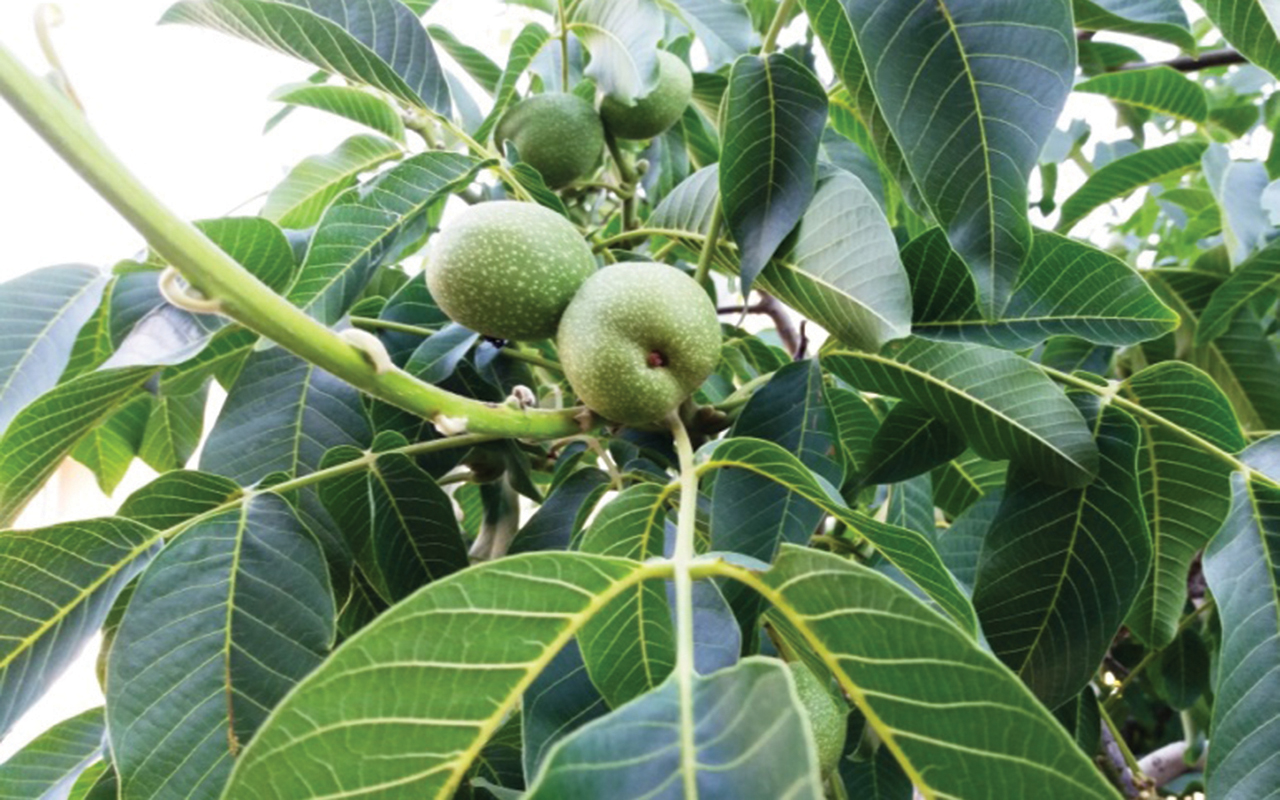
Walnut
Juglans regia L.
Juglandaceae
The walnut is a large perennial tree that lives for hundreds of years. Both its height and the spread of its branches can reach 15 metres. Walnut is classified as a monoecious plant (male and female flowers grow separately on the same tree), so it is self-pollinating. There are many different types of walnut, among the most popular being the English walnut, which, despite its name, originated in Iran.
Walnut is planted in places with mild summers and cold winters, because high temperatures harm its fruit. The best walnuts need a relatively dry climate, with at least 500 mm of annual rainfall. Walnut is also sensitive to poor aeration; therefore, it needs deep, rich and aerated soil. It is best to plant walnuts in slightly alkaline soil, and they cannot be satisfactorily cultivated in shaded areas. Walnut trees are widespread in various Palestinian regions, such as Hebron, Ramallah, and Jerusalem, and have been known to the Arabs since ancient times, evidenced by their apparent cultivation in the Roman era.
Recent studies indicate that walnuts are effective in fighting cancer. They are also rich in omega-3 fatty acids, making them beneficial for the memory and for blood circulation. They are rich in active natural substances, such as antioxidants and unsaturated fats.
Since ancient times, walnut trees, especially their leaves, bark, and oils, have been used to treat numerous ailments, such as constipation, sores, indigestion, and dizziness, as well as to expel stones and parasites. Further, walnut oil is a good moisturiser for the face and hands. Palestinians use walnuts in many traditional sweets, such as mtabbaq, a pastry with a walnut filling. One of the walnut’s names in Palestine is ain al-jamal (camel’s eye).
Source: A Garden Among the Hills: The Floral Heritage of Palestine. © The Palestinian Museum 2019